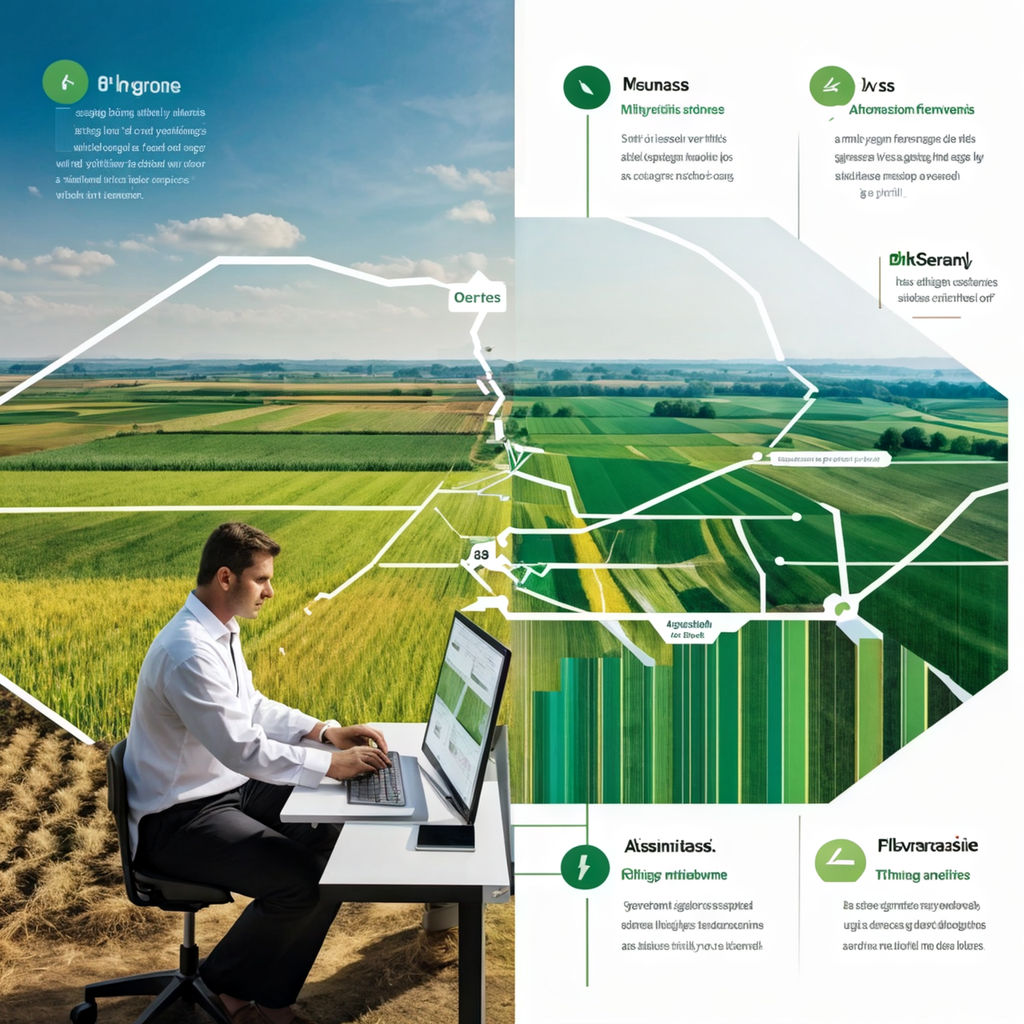Crop rotation is an ancient agricultural practice that plays a critical role in maintaining soil health, managing pests, and optimizing yield. However, the traditional approach to crop rotation often relies on guesswork and manual data analysis. Improving crop rotation strategies with business intelligence has emerged as a game-changer, enabling farmers to make data-driven decisions to enhance productivity and sustainability. This article explores how business intelligence (BI) tools can revolutionize crop rotation strategies, helping farmers achieve better outcomes.
The Role of Business Intelligence in Crop Rotation
Understanding Business Intelligence
Business intelligence refers to the technologies, applications, and practices used to collect, integrate, analyze, and present business data. In the agricultural sector, BI systems can process large volumes of data from various sources, including soil sensors, weather forecasts, satellite imagery, and historical crop data. By leveraging BI tools, farmers can gain valuable insights into their fields and crops, allowing them to make informed decisions about crop rotation and other agricultural practices.
Benefits of BI in Crop Rotation
Improving crop rotation strategies with business intelligence offers several key benefits:
- Enhanced Soil Health: BI tools can analyze soil data to recommend the most suitable crops for a particular field, ensuring that the soil remains fertile and healthy.
- Pest and Disease Management: BI can help predict and prevent pest and disease outbreaks by analyzing patterns and trends in historical data.
- Optimized Crop Yields: By selecting the right crops and planting sequences, farmers can maximize their yields and reduce the risk of crop failure.
Case Study: Successful Implementation of BI in Crop Rotation
One example of a successful implementation of business intelligence in crop rotation is a farm in the Midwest United States. The farm used BI tools to analyze soil samples, weather patterns, and crop performance data from the past ten years. Based on the insights gained, the farmers adjusted their crop rotation strategy to include cover crops that improved soil health and reduced pest infestations. As a result, they saw a significant increase in crop yields and a reduction in the use of chemical fertilizers and pesticides.
Steps to Implement Business Intelligence in Crop Rotation
Data Collection and Integration
The first step in improving crop rotation strategies with business intelligence is collecting and integrating data from various sources. This data may include:
- Soil Data: Information about soil type, pH level, nutrient content, and moisture.
- Weather Data: Historical and real-time weather data, including temperature, precipitation, and humidity.
- Crop Data: Information about past and current crop performance, including yield, pest resistance, and growth patterns.
Data Analysis and Visualization
Once the data is collected, it is analyzed using BI tools. This analysis may involve identifying patterns and trends, forecasting future conditions, and creating visual representations of the data. Farmers can use these visualizations to understand the relationships between different variables and make informed decisions about crop rotation.
Decision-Making and Implementation
Based on the insights gained from data analysis, farmers can make data-driven decisions about their crop rotation strategies. This may involve selecting specific crops, determining the optimal planting sequence, and adjusting the timing of planting and harvesting. By continuously monitoring and analyzing data, farmers can refine their strategies over time to achieve better results.
Conclusion
Improving crop rotation strategies with business intelligence is a powerful approach that can help farmers optimize their agricultural practices, enhance soil health, and increase crop yields. By leveraging BI tools, farmers can make informed decisions based on data, rather than relying on guesswork or outdated methods. As the agricultural sector continues to embrace digital technologies, the use of business intelligence in crop rotation is likely to become increasingly common, leading to more sustainable and efficient farming practices.
FAQs
What is crop rotation, and why is it important?
Crop rotation is the practice of growing different types of crops in the same area in sequential seasons. It is important because it helps maintain soil fertility, reduces soil erosion, and prevents the build-up of pests and diseases.
How does business intelligence improve crop rotation?
Business intelligence improves crop rotation by providing farmers with data-driven insights into soil health, weather patterns, and crop performance. This allows farmers to select the most suitable crops and planting sequences, optimize yields, and reduce the risk of pest and disease outbreaks.
What types of data are used in business intelligence for crop rotation?
Business intelligence for crop rotation uses a variety of data, including soil data, weather data, and crop data. This data is collected from sensors, satellite imagery, weather forecasts, and historical records.
Can small-scale farmers benefit from business intelligence?
Yes, small-scale farmers can benefit from business intelligence by using affordable and user-friendly BI tools. These tools can help them make informed decisions about crop rotation and other agricultural practices, leading to better outcomes and increased profitability.
Is business intelligence only useful for crop rotation?
No, business intelligence can be applied to various aspects of agriculture, including pest and disease management, irrigation scheduling, and supply chain optimization. By leveraging BI tools, farmers can improve their overall efficiency and productivity.



